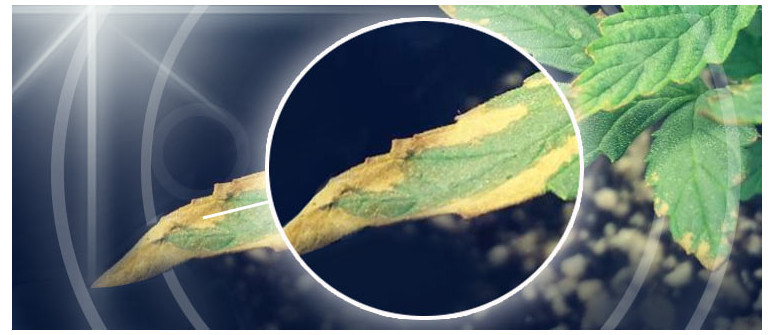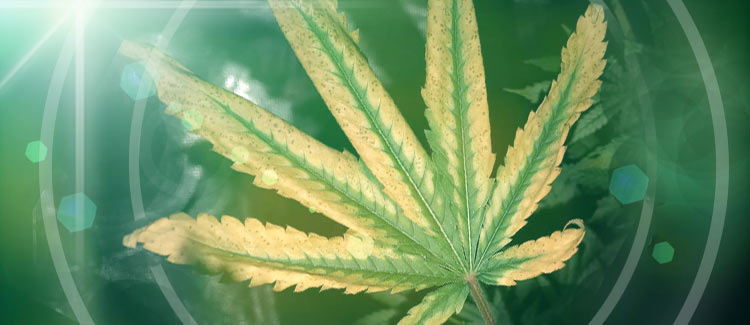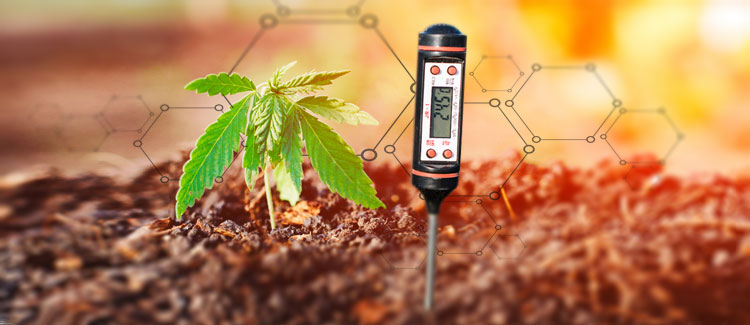Nutrient burn in cannabis: how to prevent and treat

Nutrient burn can wage war on your cannabis plants, but that doesn't mean that all hope is lost. Read on to find out how to treat nutrient burn should it strike your cannabis plant, and how to prevent it from occurring in the first place.
Nutrient burn can be harsh. Luckily, if you know how to spot it and react, you can usually get your plants back into shape without causing them too much stress. Here’s a guide to nutrient burn, what it is, and how to deal with it.
WHAT IS NUTRIENT BURN?
Nutrient burn is a type of stress caused by an abundance of certain nutrients. It’s a common issue among new, inexperienced growers, as well as super-enthusiastic growers hoping to push their plants further by pumping them full of fertilizers.
And while nutrient burn definitely stresses your plants and stunts their growth, it can be managed and reversed, so long as you catch it early and follow the right steps of treatment.
Plants need a solid balance of nutrients in order to grow efficiently and bloom. When this balance is disturbed, they start to suffer. In cannabis plants, this usually manifests in disturbed vegetative growth, which, come harvest time, usually results in smaller yields and lower-quality bud.
WHAT CAUSES NUTRIENT BURN IN CANNABIS PLANTS?
Remember, unlike a deficiency, nutrient burn occurs when your plants get too much of one or more nutrients. Some common causes of nutrient burn include:
Mixing nutrients too strong
This can negatively affect your plants at all stages of their life, but younger plants are especially fragile and tend to struggle more when overfed. If you are not sure how to mix fertilizers, it is safest not to push the plants with high concentrations feedings, especially avoid mixtures based on products from multiple brands.
Drying out the soil too much
When the plants use up water from the medium, its content lowers while the remaining fertilizer concentration raises. It is a normal occurrence, that is why it is important not to dry the soil to the bone, which could cause Ec to spike and burn roots of your precious plants.
Overusing bloom-boosters
Bloom-boosters usually contain higher concentrations of phosphorus (P) and potassium (K). And while they are a great way to boost the size and quality of your harvest, overusing these boosters can have negative effects on your plants at one of the most critical stages of their life cycle.
Overusing growth-stimulators.
Growth fertilizers are a great way to really push your plants as they’re vegging. Unfortunately, using too much will end up stunting a plant’s growth instead.
SIGNS OF NUTRIENT BURN

Early signs of nutrient burn include:
- Deep green leaves with almost fluorescent tips
- Bending or curling of leaf tips
- Yellowing sugar leaves and calyxes
As nutrient burn settles in, it’ll cause the following symptoms:
- Yellow, burnt-looking foliage
- Curling leaves that quickly die off
- Yellowing or browning buds
HOW TO DEAL WITH NUTRIENT BURN
Nutrient burn is something you’ll want to avoid at all costs. Luckily, if you find your plants showing signs of nutrient burn, there are some simple ways to deal with it:
Start by trimming off any affected foliage and buds
This includes calyxes and sugar leaves. Unfortunately, this stuff will only die off and start to rot if left attached, which will cause you even more headaches.
Next, flush out your nutrients
To do this, all you need to do is water your plants excessively with pH-balanced water (5.5–6.5 for hydro and 5.8-6.3 for soil). Just saturate the pots completely, wait for 15 minutes, and then repeat the process letting the excess water to run out of the pots.
To be sure your plants are flushed properly, you can measure the soil "runoff" water by using a total dissolved solids (TDS) meter. Compare this result to the concentrations deployed and you will know more or less how much available fertilizers are in the growing medium at that moment.
Now it’s time to assess your nutrient regime
Remember that many people see great results growing weed using little more than good-quality soil and water. Sometimes, just a strategic nutrient boost is all you need to push your plants that little bit further.
Next, make sure to help the roots of your plants a bit
Ttreat your plants with some product which will help you maintain health of the rootzone, be it root tonic, humic/fulvic acids, enzyme based products and of course vitamins/minerals to help bring your ladies back up to full strength. These products usually help breaking down leftover fertilizers and improve their uptake while encouraging healthy root growth.
Re-introduce your plants to their feeding schedule
Finally, once you’ve followed the steps above, it’s time to re-introduce your plants to their feeding schedule. When you start re-feeding, make sure to use only 1/2-strength solutions to start with, increasing the concentration every 2 or 3 feeds. Your plants are just beginning to recover, and the last thing you want to do is cause a relapse.
If your plants suffered from burn in the vegetative phase, make sure to compensate for the lost time before bringing them to flower. If, unfortunately, your plants experienced the burn during flowering, there is nothing you can do to compensate for the damage.
In some cases plants might require few extra days in order to fully ripen after a stress period in flowering. Try to reduce the nutrient doses in order to avoid further damage and keep the mistake in mind for further grow cycles.
HOW TO PREVENT NUTRIENT BURN IN THE FUTURE

When growing weed, the best offense against nutrient burn, infections, or pests is a solid defense. Hence, we always recommend preventing an incident rather than treating it.
To prevent nutrient burn, just remember that less is more. We really can’t stress this point enough; some good soil, natural water, and plenty of sunshine are technically all you need.
As such, it’s not 100% necessary to go crazy with nutrients. In fact, doing so (as we saw) can actually bring you more problems than solutions. Furthermore, keep in mind that some cannabis nutrient retailers will suggest augmented doses in order to sell more of their product.
We’re not saying you shouldn’t use nutrients, but if you do, just make sure to do so sparingly. Take the time to read the package instructions and guidelines on the nutrients, and don’t be scared to ask other growers for tips.
Also, make sure to measure your nutrients accurately with some kind of measuring spoon or cup. Start slow and build up your solutions so your plants get used to the added nutrients and have time to adapt.
If you have an option to use a Ec meter while mixing nutrients, it is highly recommended along making notes. General rule of thumb tells to keep the Ec around 0,8-1,3 for Vegetation and around 1,7 in Flowering.
But before you increase the fertilizers concentrations, you gotta make sure your plants can actually use it, that is why its important to build up gradually. Some plants will be able to take more, others will not like it.
YOU CAN AVOID NUTRIENT BURN
In our experience growing cannabis, we tend to see nutrient burn strike when growers try to cut corners, get excited, or try to rush their plants along. Remember, growing cannabis should be a fun, rewarding, and relaxing experience. So take the time to observe your plants closely, and we guarantee you’ll be well on the way to avoiding nutrient burn.
.jpg)
.jpg)

.jpg)
